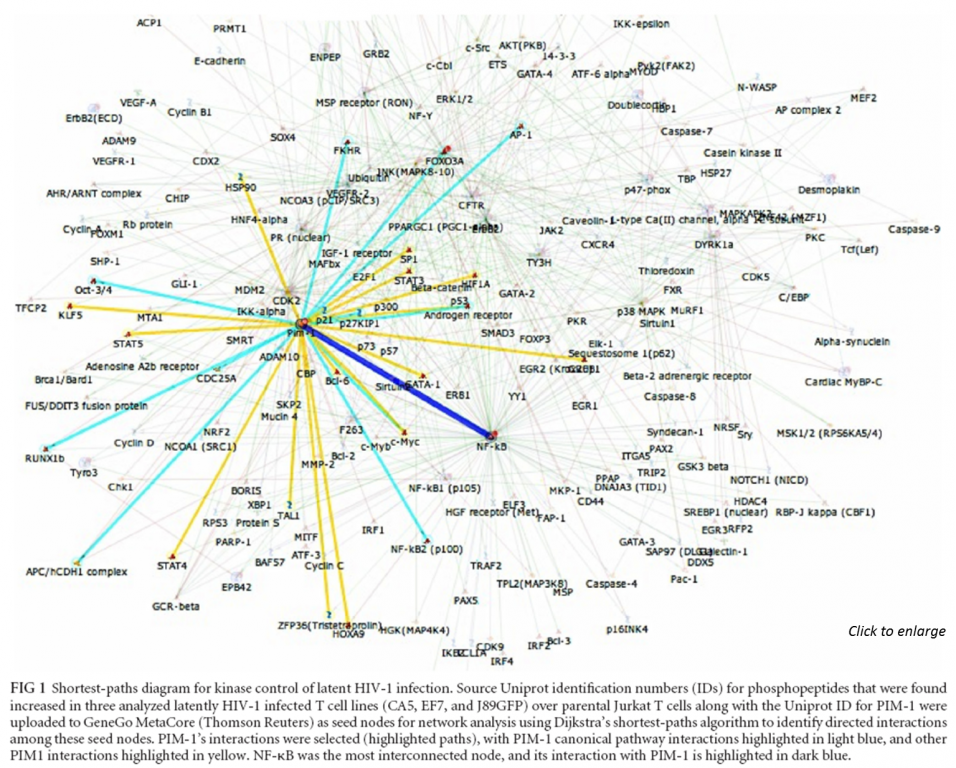In order to better understand the molecular biology of HIV-1 latency, Alexandra Duverger et al from the Department of Medicine of the University of Alabama in the USA, carried out a study in which the PamGene platform was used. This study was published in January in the Journal of Virology.

The main problem in eradication of HIV-1 is the reservoir of latent or inactive HIV that silently lingers in a patient’s body. Last year, researchers found out that this reservoir was 60 times larger than previous estimates. Current treatment of HIV works by targeting the actively replicating form of HIV – but not this inactive form. The first essential step to cure HIV is to reactivate the latent virus therapeutically. Therefore the molecular mechanism has to be understood better.
The researchers of Alabama previously demonstrated that control of HIV-1 latency starts with kinase activity. In this follow-ups study, they demonstrated that the kinase activity profile of latently HIV-1-infected T cells is altered relative to that of uninfected cells. A ranking of altered kinases generated from the kinome profile data predicted the kinase PIM-1 as a key switch involved in HIV-1 latency control. Further research demonstrated that PIM-1 activity is indeed required for HIV-1 reactivation in T cell lines and primary CD4 T cells. The presented results thus confirm that kinases are key contributors to HIV-1 latency control. This expands the conceptual understanding of the dynamic interactions of the host cell and the latent HIV-1 integration event and position kinome profiling as a research tool to reveal novel molecular mechanisms that can eventually be targeted to therapeutically trigger HIV-1 reactivation.
Read the full article
Kinase Control of Latent HIV-1 Infection: PIM-1 Kinase as a Major Contributor to HIV-1 Reactivation

